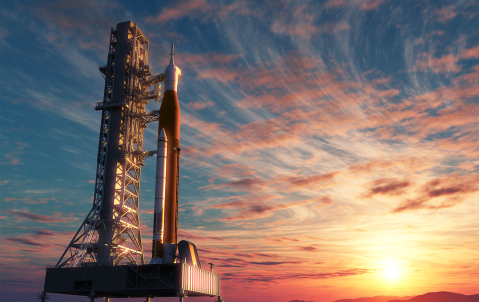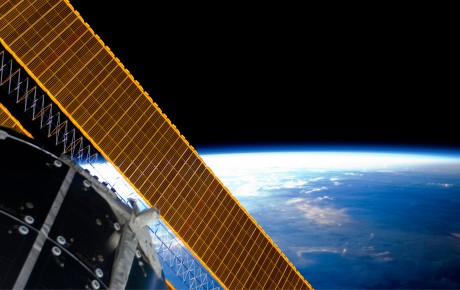
Lift-off year for new rockets
This year could be a red-letter year for the space industry, with more than two dozen new launch vehicles slated to have their maiden voyages. They range from the very large to the very small. SpaceX’s Starship is the most powerful rocket ever developed, designed to fly to Mars and beyond, capable of carrying payloads equivalent to the weight of a Boeing 787. Whereas Orbex’s Prime rocket is designed to launch small satellites up to 180kg – the weight of a gorilla – into low-Earth orbit from a spaceport in northern Scotland.
Some of these new rockets are from companies with long track records from the traditional space superpowers, the US, Russia, Europe, and China, while others are made by start-ups from countries like the UK, Germany, Australia, India, and South Korea.
“But launching a new rocket for the first time is always risky,” says Pascal Lecointe, Space Line Underwriter at Hiscox London Market. “So is the second, third and fourth times, for that matter, and all the times after that.”
“But launching a new rocket for the first time is always risky,” says Pascal Lecointe, Space Line Underwriter at Hiscox London Market. “So is the second, third and fourth times, for that matter, and all the times after that.”
Already this year, two launch vehicles from new players, LandSpace’s Zhuque-2 and Relativity’s Terran-1, had their maiden launches, as did the H3 and Starship, made by JAXA, Japan’s space agency and SpaceX, that have both masterminded plenty of launches. All four new spacecraft lifted off but did not reach orbit.
“Failure is not an option” is the quote famously attributed to NASA flight director Gene Kranz. (Spoiler alert, he didn’t say it.) But crashes and malfunctions are an accepted part of the space business.
Lecointe explains: “Three or four in every ten maiden rocket launches will on average end in failure. For large rockets, the failure rate can be as high as 60% to 70%. But these failures provide plenty of invaluable data that enable scientists to change their rocket’s design so the likelihood of success for the second or third launches are much higher. Learning by their failures makes a launch vehicle safer and more reliable before it carries a payload or crew.”
Starship’s maiden launch was described as a "successful failure", while NASA boss Bill Nelson tweeted: “Every great achievement throughout history has demanded some level of calculated risk, because with great risk comes great reward. Looking forward to all that SpaceX learns, to the next flight test—and beyond.”
New rockets mean new risks
Insurers typically don’t cover rockets’ maiden flights, but when deciding whether to underwrite future launches for this new generation of launch vehicles they will have to factor in some new unknowns. As well as new designs from new companies, they use new manufacturing methods and materials. Terran-1, which lifted off from Cape Canaveral in March, is the first 3D printed rocket, while Orbex’s Prime rocket, which is due to take off at the end of this year, uses carbon fibre/graphene composites for the main structures and tanks.
Both are also among many of the new launch vehicles, including Starship, whose component parts are designed to be recovered and used again in future launches. Unlike in the first space race, when superpowers spent many billions of dollars on rockets that would only be used once, today it’s companies that are reaching for the stars. The new era of space travel needs to provide value for money, as well as being more sustainable, which means making reusable rockets.
Reusable rockets bring new challenges
Designing and building a new rocket is complicated enough, without making them so they can fly again and again. How many times can their individual component parts be used before fail?
These are issues that neither rocket scientists nor space insurers have had to consider until few years ago, says Michele Biagi, Hiscox’s Deputy Space Line Underwriter. New launch vehicles are being designed to operate like planes, shuttling people, and cargoes to orbit, then to the Moon and beyond.
Reusable rockets, like aircraft will wear out over time, but that fatigue will occur much quicker, explains Biagi, the question is how quick?
The gradual wear and tear that aircraft experience, where they slowly suffer damage from the stress of repeated take-offs, landings, and cabin pressurisations, is known as high cycle fatigue, as planes will routinely fly thousands of hours before parts needed to be replaced.
Biagi says: “Plenty of data exists for the fatigue assessment of aircrafts, but reusable rockets are different because many components are subjected to a combination of high temperatures, pressures differences and mechanical loading which are far more extreme than for planes. In these conditions, metals suffer from phenomena called low cycle fatigue and creep, where the metal can deform plastically and suffer increasing damage over time, to the point when the metal fails completely. It’s much more difficult to reliably predict the lifespan of rocket components.”
So, when will the materials and components from which reusable rockets are made fail? Their designers are just beginning to find out.
In September 2022, Blue Origin’s New Shepard sub-orbital vehicle failed after 22 successful launches. The cause was structural fatigue to the nozzle of its booster rocket “caused by operational temperatures that exceeded the expected and analyzed values of the nozzle material”, the company said.
SpaceX is the only company that has successfully reused the same first stages and other major components, such as fairings, for orbital launches. So, while underwriters can use its data to help them assess the risk of reusable rockets, both the data and everyone’s experience of assessing it remains limited.
SpaceX also seems to be using the increasing knowledge and confidence gained from more than 200 successful launches to test the limits of its launch vehicles. “Every launch is an opportunity to improve,” says Gwynne Russell, its Chief Operating Officer in the documentary film Returning to Space. “You never know your systems until you push them to their limits.” That test-it-until-it-breaks mentality helps to push the limits of space travel forward but may cause some space insurers sleepless nights.
A new fuel for new rockets
Several of the new rockets will also be powered by a new fuel: methalox, a combination of methane and oxygen, rather than traditional rocket fuels, which either use kerosene or solid fuels.
Methalox is cleaner and cheaper – and has the added advantage for rocket makers with ambitions to explore the outer reaches of the Universe and beyond that it can be made on Mars to bring spacecraft home from the red planet. Its exhaust is simply water, so there is no soot that builds up on the rocket stages, which can put them out of action for cleaning and repair.
But methalox is also harder to work with because it’s not so easy to combust with oxygen as kerosene or solid fuels, which requires rockets and their booster engines to be designed differently. Difficulties in perfecting prototypes have put several launch vehicles behind schedule.
But methane-powered rockets have already lifted off this year, if only for a few minutes, says Lecointe. “Both the Zhuque-2 and Terran-1 were powered by methalox, proving that the new fuel can provide enough thrust to lift a rocket from its launchpad.”
“Both the Zhuque-2 and Terran-1 were powered by methalox, proving that the new fuel can provide enough thrust to lift a rocket from its launchpad.” says Lecointe.
In with the new
New rockets with new designs, new manufacturing techniques, new fuel, and a new purpose: reusability. Space insurers have many new issues to consider, so may decide to see how reusable rockets perform and evolve, taking a back seat until the technology is proven, as they did the first time SpaceX reused a Falcon 9 booster back in 2017.
But the new generation of space companies need risk capital to realise their celestial ambitions.
Hiscox keeps its feet firmly on the ground when insuring space vehicles. Both Lecointe and Biagi understand rocket science because they worked as engineers in the space industry before becoming insurers.
“Our approach is to look beyond the ‘new’ tag of a new launch vehicle,” says Biagi.
“A major configuration evolution – such as a modified engine or new manufacturing process – of a proven and reliable launch vehicle can be riskier than one of the early flights of a ‘new’ launch vehicle, which comprises components that have a lot of heritage and have successfully flown on other launch vehicles or are operated by an experienced and reliable launch service provider.”
Sometimes new isn’t always as risky as it may first seem.




